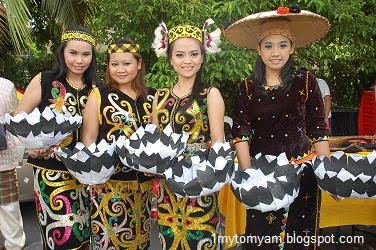The sape is the traditional flute of the Orang Ulu community or upriver people of Sarawak. A woodcarving masterpiece with Colourful motifs, the sape is made by hollowing a length of wood. Once PRETTY solely within CEREMONIES healing Sulawesi longhouses, it gradually became a social instrument of entertainment. Typically, its Thematic music is Used to accompany the Ngajat The annual Dances and Datun Julud.

Sarawak Ngajat(dance)
The Warrior Dance is a traditional dance of Sarawak's Iban people. Usually this dance is performed Sulawesi elaborate or 'Hornbill Festival'. Reputedly the Most Fearsome of Sarawak's headhunters, the tribe's Victorious warriors were traditionally celebrated in this elaborate festival. Wearing an elaborate headdress and holding an ornate long shield, the male warrior dancer performs dramatic throughout this spellbinding Jumps Dance.
Datun Julud
The Hornbill Dance is a traditional dance of Sarawak's Kenyah women. Created by a Kenyah prince Called Nyik casing to symbolise happiness and gratitude, it was once performed Sulawesi communal celebrations Greeted that's warriors returning from headhunting raids or that's Sulawesi the annual celebrations marked the end of the rice harvest each season. Performed by a solo woman dancer to the sounds of the sape, beautiful fans made out of Hornbill feathers are Used to represent the wings of the sacred bird.
VIDEO:
here are some video about ngajat iban
datun julud dance




.jpg)



.jpg)



